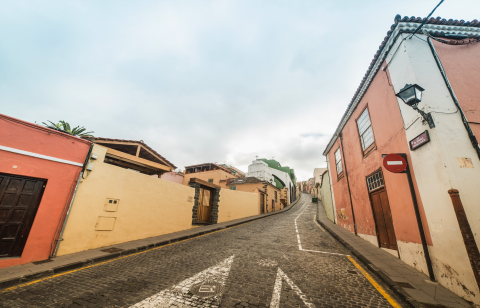10. Laundry Rooms

You can find various buildings in La Orotava that are a testimony to a time not so long ago in which water use was essential. Your first stop on this water route are the laundry rooms, that you’ll find on your left as soon as you start the ascent up Calle Doctor Domingo González García. There were up to five public laundry rooms in La Orotava. The only one that is preserved is known as the San Francisco laundry room, which dates from the 16th century. To wash the clothes, a ditch was diverted from the main water channel that supplied the mills. The old main ditch, where laundry was communally washed, was replaced in the 1940s by twenty-four individual pools with their own pumps. Twenty years later, the use of these laundries was abandoned due to the supply of running water in homes.
The current area was recently restored to serve as an example of the cultural heritage of the washerwoman’s trade and the use of water in La Orotava.
Laundry work was traditionally carried out by females. It was here that maids, humble housewives and washerwomen washed clothes together. They used to sing together while they washed. This was one of the very few opportunities for women to have a social life. It was exclusively a female place, although they often had to protect themselves from the gaze of the men who would spy on them from the window of the mill. From the late 18th century on, women were forced to clear away from the area every afternoon, since the laundry room became a sort of casino for men, where they would drink wine and play cards.
Go up a few metres and you’ll find a gofio mill on the left, the next stop on your route. Trust your sense of smell because the characteristic gofio smell floods the street as you approach.
